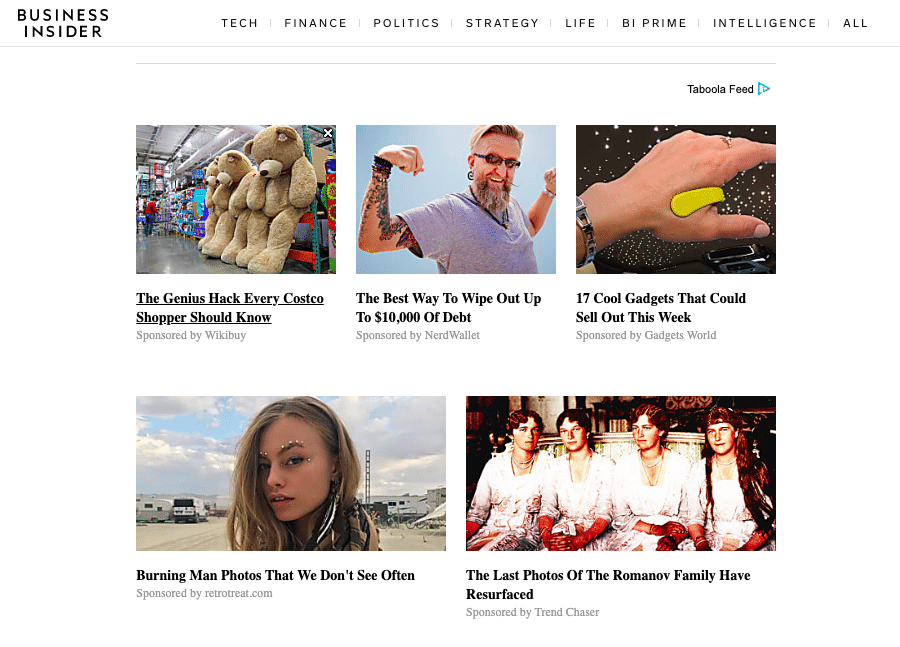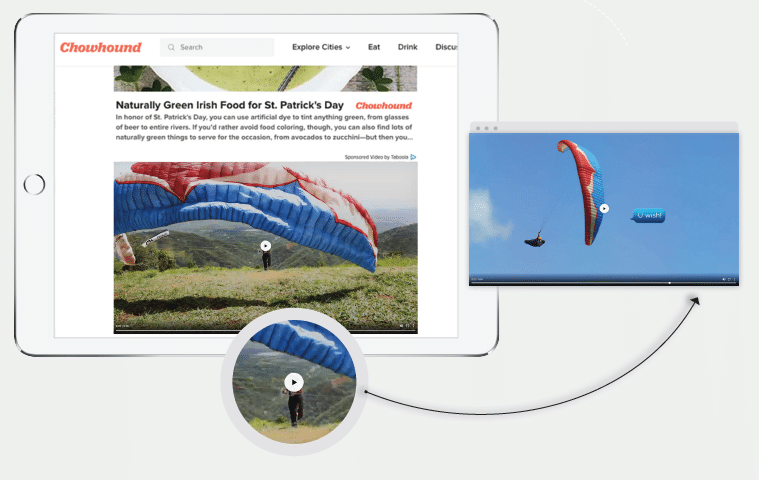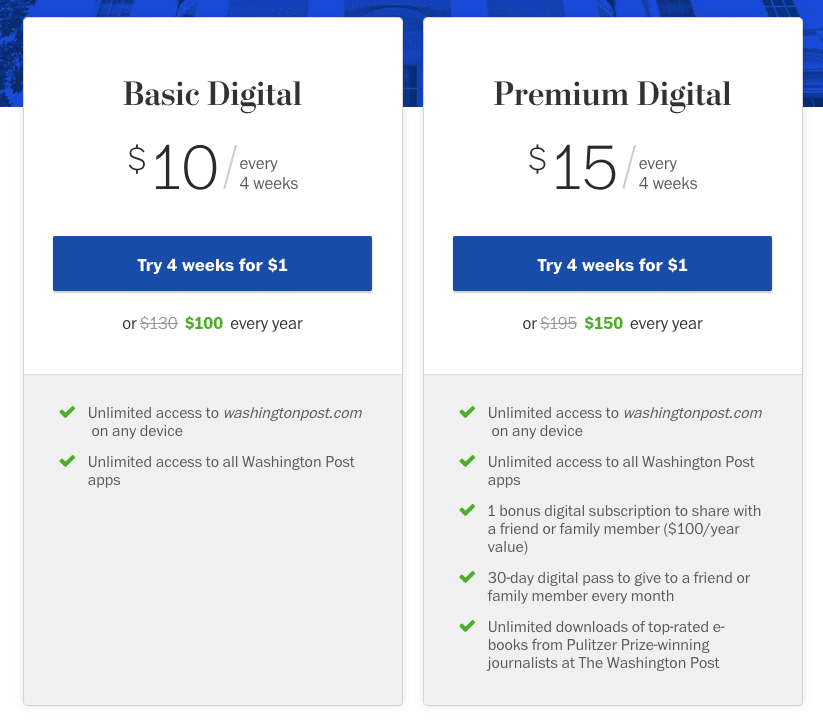You’re ready to make money from your website, but you’re not sure which strategies will be most effective. That’s where this guide comes in. Here are the top ten tactics for driving revenue from your website.
How Much do Websites Make From Ads?
Well, that depends on which monetization methods you use and which metrics you track. We cover that in the next piece of this series.
For now, here’s a comprehensive look at how to earn money from website visits. By the end, you’ll be able to choose the strategy — or strategies — that best fit your budget, goals, and site layout and you can start making money while generating impressions, clicks, and conversions.
Let’s begin.
How to Monetize a Website
Publishers work hard to make their websites engaging and full of click-worthy content. You don’t want their content to just sit there. You want to enhance it through monetization, personalization, and strategic advertising partnerships. As a result, readers enjoy more personalized experiences and publishers drive revenue so they can keep creating content people enjoy.
Here’s how to get your website earning:
1. Pay-per-Click Advertising
Pay-per-click advertising (PPC) is a popular strategy for driving more visitors to your website and increasing high-quality leads.
What is pay-per-click advertising?
PPC advertising involves placing ads in search engine results pages – on Google, for example – to drive people to your website. Here, we Googled ‘small business invoice platforms.’ The first four results you see with the label ‘Ad’ are PPC advertising.

How does pay-per-click advertising work?
PPC ads are commonly acquired through a bidding process. On Google’s PPC platform, Google AdWords (as well as in Google Adsense), publishers bid on different keywords that people search for. In the above example, QuickBooks and FreshBooks might have bid on the keyword ‘small business invoice.’
Since they had the highest bids, they won the top slots on the search results page. Publishers often use keyword research platforms, such as SEMrush and SpyFu, to find the right keywords for their audience.
2. Native Advertising
Native advertising fits seamlessly into the content that surrounds it, providing a more intuitive and engaging experience for the reader or viewer.
Native advertising comes in many forms, such as sponsored blog posts or discovery platforms, which serve sponsored recommended content. Place this recommended content on a homepage, in the middle of an article, or at the end of an article and reach readers when they’re ready to discover something new and related to their interests.
Take this example of recommended content placed on Business Insider by Taboola:

Why is native advertising important?
As consumers grow frustrated with intrusive ads, such as display banners and pop-ups, publishers search for new ways to serve them ad content and avoid being blacklisted by ad blockers. Native advertising is the answer. Publishers use it to monetize their websites with personalized ad content that doesn’t disrupt the user experience.
Is native advertising effective?
U.S. advertisers spent almost $44 billion on native advertising in 2019 — over $8 billion more than they did in 2018. They know it works. Publishers host ad content to drive revenue.
Taboola is a leading discovery platform and frontrunner in the native advertising industry, connecting publishers with a network of high-quality advertisers who are ready to place relevant, brand-safe sponsored content on their sites.
Publishers control their ad experience by using keyword filters, category selection, and blocking capabilities. They track transparent metrics, such as revenue-per-visit, to ensure their native ads are working, and they can optimize campaigns for continued engagement.
3. Video Ads
Video advertising is a compelling form of native advertising that keeps visitors engaged on your site.
What are video ads?
Just as publishers can place sponsored articles and recommended thumbnails on their websites, they can also place sponsored and recommended videos. The Dominican Republic Ministry of Tourism, for example, worked with Taboola to reach U.S. travelers by placing its videos on publisher sites, such as Chowhound:

Publishers sell video ads by cost-per-completed view (CPCV) or cost-per-thousand impressions (CPM). They help advertisers target the right audiences with content that appeals to their viewers’ interests and aligns with their behaviors.
How effective are video ads?
Taboola video ads generate over 3 billion views per month among U.S. audiences and can increase viewability by 70%. Advertisers pay when ads are in view and are silent by default, so viewers control their experience and continue enjoying their time on your site.
Users actually prefer Taboola ads 2.4 times more than disruptive ads.
4. Selling Ad Space
To maximize the revenue from their digital real estate, publishers can sell ad space on their websites.
What is selling ad space on a website?
Publishers make money from their websites by selling ad space to advertisers directly or programmatically through an ad network. TechCrunch, for example, sells display ads at the top of its publication to reach readers with tech-related ads.

5. Affiliate Marketing
Publishers join affiliate programs to consistently earn money from website visits.
What is affiliate marketing?
Affiliate networks connect website owners with brands looking to promote their products. Once publishers join the network, they advertise products on their site in exchange for a commission.
How do affiliate marketers make money?
Publishers commonly earn a commission every time they refer a customer who buys a product. They also may get paid-per-click, impression, or engagement. A men’s interest blog, for example, might promote a $40 shaving kit for a 50% commission. Every time someone clicks that ad and buys the kit, the publisher earns $20.
6. Donation-Based Monetization
As an alternative to advertising, some publishers ask readers for donations.
What is donation-based monetization?
Many publishers create content for free, either as a side-hustle or a hobby. If they have a loyal fan base and returning visitors, they may set up a donation system. Readers donate through platforms such as PayPal or Venmo and become instrumental in helping their favorite websites run.
Literature and philosophy blog Brain Pickings, for instance, asks readers to donate at the end of each blog post:

7. Sell Your Own Products or Services
Some publishers think:
“Why advertise someone else’s products when I can advertise my own?”
It’s a common tactic for influencers and bloggers who specialize in a certain area and have a large following.
BuzzFeed’s Tasty, for example, generated over 1 billion views and 85 million U.S. followers in just two years by publishing food and recipe videos on Facebook. In response to this attention, the publisher launched its own line of cookware and cookbooks with Walmart.

BuzzFeed expects to drive $260 million in sales from its branded products this year, doubling last year’s revenue.
8. Sponsored Content
Publishers host sponsored content on their websites alongside their organic content.
What is sponsored content?
Sponsored content is an article or series of articles created by or on behalf of an advertiser. The article takes the form of other content on the publisher’s site. Often, the only difference is that it includes a ‘Sponsored’ disclaimer, so readers know a brand paid for it.
Thermostat brand Nest, for example, sponsored this Atlantic article about how smart-home technology affects family relationships and routines.

What is the difference between sponsored content and native advertising?
Sponsored content is a form of native advertising. As the ad blends in with its surrounding content and host platform, it is native.
Like social media ads or recommendation widgets, sponsored articles don’t disrupt the user experience and are easy to consume.
9. Flipping your Website
Just as people flip houses, publishers flip websites to earn a profit.
What does flipping a website mean?
Flipping a website involves finding an online property that needs work, improving its design, content, and marketability, proving its success in traffic and engagement, and selling it to an interested party.
Publishers can also build a website from scratch and flip it once they establish an audience. They can then use that money to start a new website or small business venture.
10. Membership Websites
Instead of — or in addition to — advertising, publishers charge readers to access their content.
What is a membership website?
A membership website offers content to paying subscribers. Placing articles behind a paywall is a growing trend among major publishers such as The New York Times, Condé Nast, and The Washington Post.

How do you make money from a membership website?
There are many different types and tiers of subscription models for online publications, including: charging for all content; charging for certain content; charging for all content after ten free articles; charging for access to content on certain devices.
Whichever mix you choose, make your options clear to readers and potential subscribers.
Balance UX and Monetization Effectively
When considering all your options for monetizing your website, it’s important to keep in mind that the user’s experience (UX) is a vital piece of the puzzle.
For example, if your website is so overloaded with ads or scripts involved in your monetization efforts that it loads slowly or even crashes, it’s going to be of no value. If the way you set it up makes it too cluttered, confusing, or difficult to navigate, users aren’t going to spend enough time there to click on ads or choose to invest in a membership program.
Always make sure you’re putting the user first and making your monetization efforts unobtrusive.
Affiliate Marketing with a hack
There are affiliate networks that offer free monetization tools to help publishers increase their profits. MyLead is a global network that has created its own Content Lockers. What do they do? Content Lockers allow you to block a certain part of your website. If your recipients wish to unlock it, they need to complete a task from a list. You can find four different types of Content Lockers on MyLead, all of them are fully customizable and free to use, so make sure to let your imagination go with the flow.
Conclusion
Your website is the storefront of your online brand. Even if you’re running a blog and not selling e-commerce, it is possible to drive revenue from that store.
Study these ten monetization strategies and use them to find the best website monetization mix for your brand. With these tactics at your fingertips, you can offer personalized recommendations, build strategic partnerships, and drive the most value from each and every website visit.